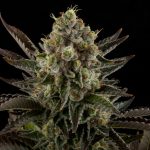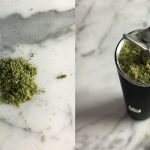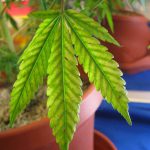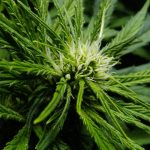One of the most important stages of growing cannabis is the vegetative or growth stage. Unlike many plants that share similar properties, a cannabis plant has characteristics that make it stand out. During this stage, there are several steps that you need to make that will be of help in the later stages of growth. An example is knowing what to feed your plants and the right time to do it. When the marijuana plants start to grow, it first builds up its stems and roots and later on foliage. It, therefore, requires a high supply of nitrogen for the process to take place.
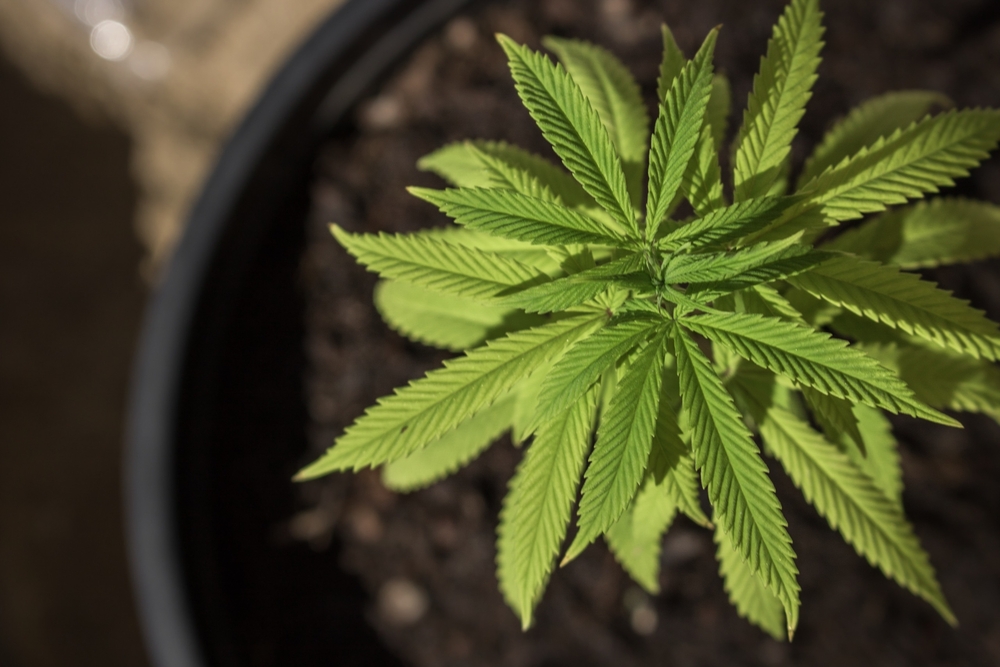
The first leaves to shoot go through photosynthesis that helps the plant to grow further. Once your marijuana plants finally germinate, you should get rid of any seedlings that depict stunted growth or any seedlings that are late to germinate to reduce the competition of nutrients and sunlight with the healthy plants. Once it gets a stable root system, how it grows and the yield it eventually produces is all dependent on how you maintain the plant. If you provide it with the right nutrients and the proper amount of light, the cannabis will grow into a stable structure ready to enter into the flowering phase.
Marijuana plants require more nutrients, light, level of carbon dioxide, and water as they continue to mature and develop. The vegetative phase of a cannabis plant involves maximizing the growth by keeping the plant strong and healthy to increase the chances of an abundant harvest during the final stages of growth.
[amazon bestseller=”cannabis nutrients”]The appearance of the First Leaves
The first leaves of a cannabis plant appear in series. It starts with one single leaf, which is then followed by three leaves, five leaves with the numbers continually increasing. After three to five weeks, the plant will have experienced several rounds of growth with well-defined stems and roots.
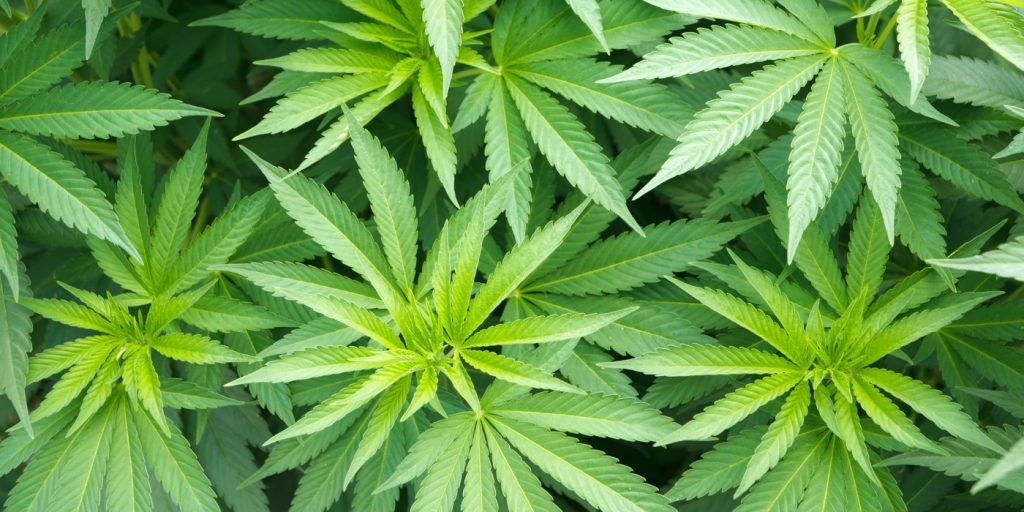
During the early development of the cannabis plants, you need to ensure that it gets plenty of supply of nitrogen. You, therefore, should use fertilizers that comprise of bat guano, worm meal or blood meal that provide you with nutrients from natural sources. You may also use organic fertilizers such as fish compounds, algae compounds, or nettle blends. Organic fertilizers are a better option for chemical fertilizers. One main reason is that you can easily overfeed your plants and cause damage to them when you use potent chemical fertilizers.
Before using any nutrients on your cannabis plants, you need to know their level of electrical conductance. For plants that shoot their first leaves, you should ensure that the electrical conductance for the nutrient solution you will provide the plant is one. You can gradually raise the conductance as the plant continues to grow and mature. As such, when a plant gets close to 5 different levels of foliage, you can use a nutrient solution that has an electrical conductance of about 1.5.
With the development of branches, you can further increase the electrical resistance to 2. However, you need to be careful and not provide the plants with too many nutrients or water. Once you submit your plants with more water than necessary, they can develop more in the roots rather than the buds, which is not a good sign for productivity.
To prevent the chances of overwatering, you should let your plant roots to get some air and rest in-between irrigation. The most important thing to remember however is to provide your plants with nitrogen immediately the first leaves shoot and to ensure that the electrical conductivity then is not more than one.
Growing Parameters for Cannabis
There are several factors you need to optimize throughout the growing stages of cannabis, especially in the early phases.
Light
The vegetative phase of cannabis plants contains the most prolonged period under which the plant is under light. Once you are past the germination stage, your plants are strong enough to support the exposure of light for 24 hours. Even then, you should give it a rest period of up to 6 hours of darkness and 18 hours of light exposure. When the plants are under the exposure of light, they conduct photosynthesis, a process through which the chlorophyll in the leaves absorbs the light and converts it to chemical energy. During the 6 hours of darkness, the plant respires releasing oxygen and taking in carbon dioxide. There are several grow light options that you can choose. They include; CFL bulbs, metal halide grow light, LED grow lamps among others. CFL bulbs are the best to use since they produce a cool white light while saving on electricity. They also do not produce heat that can be harmful to the plants. The main factor that you need to consider when choosing a grow light its ability to provide full spectrum light. If you want to speed up the growing phase, you should use a metal halide bulb. The more light you give your plants, the faster the growth. The most significant disadvantage to this bulb is that it produces a high amount of heat that can damage the plants. It can, however, come in handy if the growing tent is in a cold place. It is therefore advisable to use two different lighting option, one for winter and another for summer.
You should be careful not to let the plants scorch from massive lighting. Therefore, you should ensure that the type of light you use is not too strong and is at a safe distance from the plants. The main goal of the vegetative stage of a cannabis plant is to allow the plant to grow into a healthy and robust plant. You want the buds to get much light exposure so that they can grow bigger once the plant gets into the flowering stage.
[amazon box=”B0026KW5W8″ grid=”1″]Temperature
When planting cannabis in a grow room, you should ensure that the temperature stays between 68 and 78 degrees Fahrenheit. The temperature of the roots, however, should be slightly lower at about 65 degrees Fahrenheit. You need to ensure that the soil is warm enough to support root development. If the root does not grow properly, the whole plant will be put in danger.
Humidity
It is imperative that you take control of the humidity levels in your cannabis grow tent. The amount of moisture in a grow room influences how the plant respires and can cause significant damage to a plant if not properly regulated. If your grow room environment is dry, you should use a grow room controller to control the humidity levels. You should ensure that the level of humidity stays in between 50 percent and 70 percent. This is especially important during the early stages of growth. Once it matures, the level of sensitivity to humidity decreases.
An example of a grow room controller you can use is;
Inkbird ITC-308 Max.1200W Heater,
[amazon box=”B01HXM5UAC” grid=”1″]The Inkbird ITC-308 is a convenient plug and play temperature controller that you can use for your grow house. The controller comes with two displays, one showing the set temperature while the other shows the measured temperature. You can set a high and low temperature, and it has an alarm that sets off whenever the temperature in the grow room is over that set. It comes with a one year warranty.
Irrigation
During the growth phase of cannabis plants, there is an exponential increase in the amount of water needed as the plants continue to grow. You should always be aware of this rise in water demand and respond appropriately. It is essential that you ensure the temperature of the water is 22 degrees Fahrenheit. It is best also to ensure that the pH of the water lies between 6 and 6.8 with the electrical conductivity around 0.4 and 1.2milliSiemens if you are using soil as a growing medium. For coco coir and hydroponic systems, you should maintain the water pH levels in between 5.5 and 6 and electrical conductivity of 1.4 and 1.6 milliSiemens. It is vital since the pH levels and electrical conductivity affect how nutrients assimilate in the water.
[amazon box=”B00F2QOCYC” grid=”1″]Nutrients
The type of nutrients you use play an essential role in the vegetative growth phase of cannabis. The market contains a vast range of nutrient options that you can use on cannabis. The vegetative stage primarily requires Nitrogen and a bit of potassium. One very convenient product that you can use is a fertilized substrate. These are complete packages that contain the right type of nutrients to meet the needs of a plant for a set period. During the initial stages of the vegetative phase, you should consider applying a rooting hormone to the plant before introducing irrigation water to help boost the growth of roots.
You should, however, be very careful not to over-fertilize your plants. Plants can quickly saturate due to the accumulation of salts from fertilizers.
It prevents them from adequately assimilating to the nutrients. The plants then start showing signs of deficiency such as the yellowing of the leaves, a widespread symptom to nitrogen deficiency. A lack of Calcium and Magnesium, on the other hand, affect the buds and young leaves deforming the plant and leading to the development of yellowish spots.
Several factors have a direct influence on how cannabis plants grow in the vegetative phase. By understanding these factors, you will have the required knowledge on how to deal with them, giving you an edge in the growing of cannabis. You can then either lead your farm to attain a successful harvest or disaster.
Growing Cannabis Indoors or Outdoors
The most significant difference between growing cannabis indoors and outdoors is the type of light. Indoor marijuana cultivation uses artificial light, while outdoor cultivation uses natural light from the sun. Outdoor cultivation requires you to follow the natural seasons and grow your marijuana when the temperature and light are favorable. It means that you do not have control over the light and temperature during outdoor cultivation. All you have control over is irrigation, nutrients, and growing medium.
It is important to note that the growth phase in outdoor cultivation is longer than that of indoor gardening since you cannot control the amount of light that the plants receive. The growth phase for the early varieties can last for up to 3 to 4 months with the latter ones taking 5 to 6 months if you begin growing your cannabis in spring.
When you grow your marijuana plants indoors, you have total control over all the elements affecting the plant. You can then control the natural development of the plant, such as speeding its growth rate and improving qualities such as flavor, effects, and increasing the yield.
The vegetative phase in cannabis plants that grow indoors is shorter than those grown outdoors. However, the variety of marijuana you produce can also have an impact on the time of growth. Some types can take 2 to 4 weeks to grow while others can take 4 to 8 weeks.
The Type of Growing Medium You Use.
The growing medium that you use also plays an impact on the vegetative growth phase. Marijuana that grows on soil takes a longer time than any other growing medium. However, the ground is one of the best growing mediums since you can easily control it. It is why soil is the best for use by a novice cannabis grower. When the ground contains the right type of fertilizers, you can provide your marijuana plants with the nutrients it requires during the growth phase.
The vegetative growth period in coco coir growing medium is shorter than that soil. You can attribute this to the plant roots getting enough oxygen during their early stages of growth. The high exposure of oxygen to the roots during the early stages of growth leads to the development of a good root system that leads to the explosive growth of marijuana. Unlike soil, coco coir is more demanding when it comes to the control of water and nutrients.
A hydroponic system is the most work-intensive growing medium. It is favorable for use by a professional cannabis grower due to the technicalities that it carries. Growing marijuana in a hydroponic system takes the shortest time in all the three growing mediums. The plants grow at a fast rate since the levels of oxygenation in the roots is very intense. The amount of nutrients applied is also higher than that in the other growing mediums. Any slight mistake that you make when handling the marijuana in a hydroponic system can lead to their death.
Training and Shaping your Plants
The vegetative stage sets the stage for the development of your cannabis plants. Light is a critical factor in aiding the plants to grow. Cannabis plants get taller to get more access to light. If you leave them to grow on their own without inspecting them, the plants will have plenty of spaces in between the branches and the nodes. The yield is then affected negatively.
There are various methods you can employ on your cannabis plants to help make the plants bushy and have increased yields. Some of these methods include:
• Topping
• Defoliation
• Fimming
• Low-Stress Training
• Super Cropping
Topping Marijuana Plants
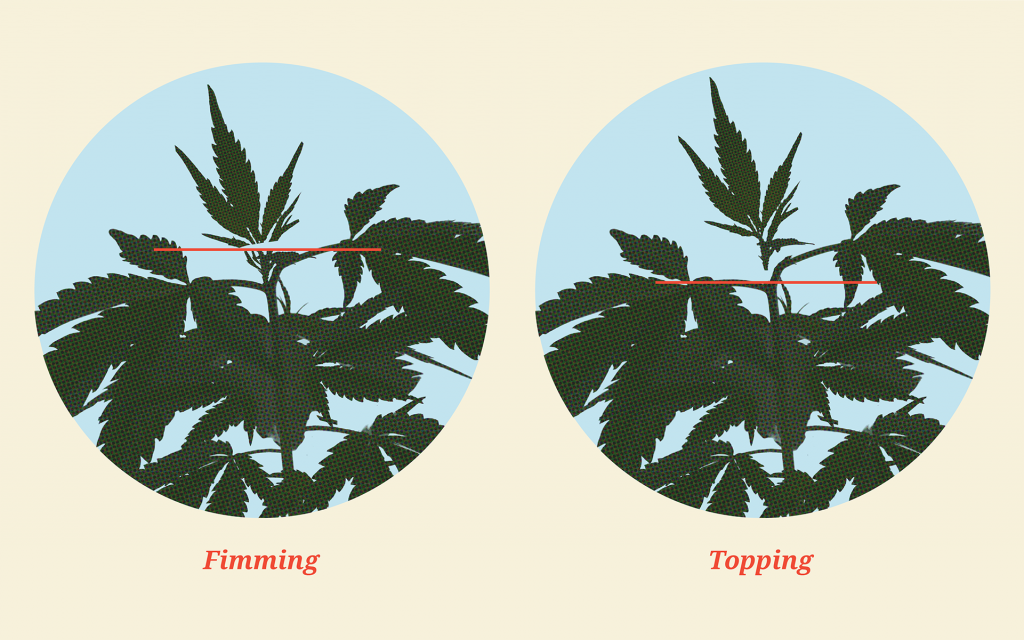
Topping involves using a blade to cut the top part of the plant to promote the lateral growth of the lower cannabis branches. Topping is an essential process required to help keep the plants healthy and ensure high quality growth. It helps to redistribute hormones from the central stalk to the rest of the plant. If the cannabis plant is on its own, it will grow vertically since all its energy focuses on the central stem. The result is the development of one long stalk that carries smaller shoots. The little stalks produce tiny buds affecting the overall yield. By topping a cannabis plant, you can make it redirect its energy to the lower branches and become bushier.
Fimming
Also called pinching, the process is very similar to topping. It involves removing a top section of the main stem. Depending on your preference, you can choose to use scissors, clippers, or a blade. However, pinching off by using fingertips allows room for error and more than often results in a successful FIM. The fimming process came by as an accident. However, it is proven to be effective. Many growers prefer fimming to topping since it is more effective in increasing yields. It can lead to the development of 4 or sometimes even eight shoots from the main stem rather than two by topping. By fimming, during the early stages of plant growth, you can effectively transform your cannabis plants and make them bushy. You should note that by using fimming, your cannabis plants will experience stunted growth until the stress on the main stem heals. It subsequently leads to the plants staying in the vegetative growth stage for 4 to 6 weeks.
Low-Stress Training (LST)
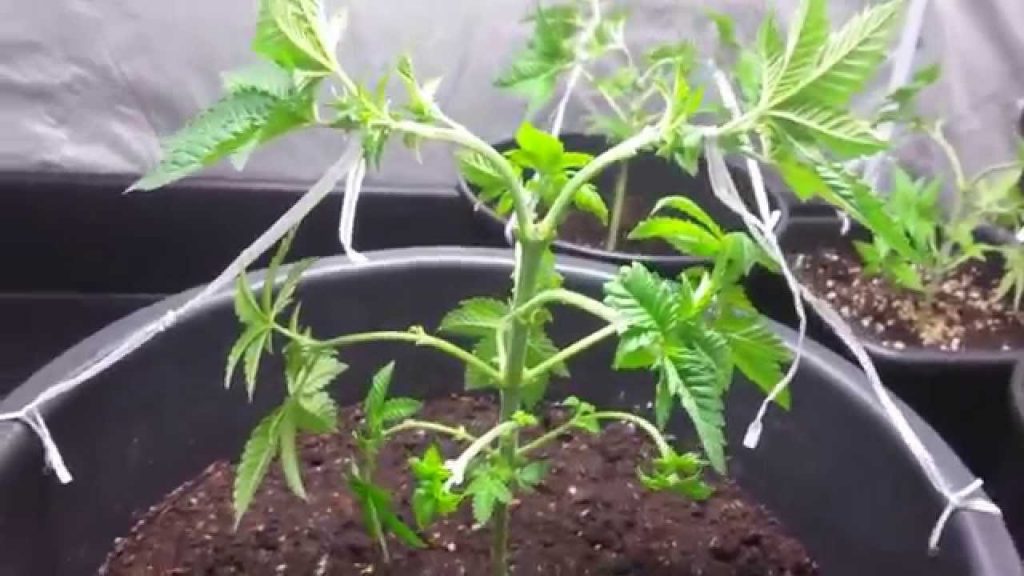
LST is a common training technique for indoor marijuana. It involves bending the plant while it grows by tying down the branches once they become long. By tying down the top of the plant in a loose L-shape, auxins can then distribute equally in the whole plant. You can use a green plant tape to tie down the plant as it can stretch and prevent the plant from chocking. You want the plant stalks all around the pot making bud sites visible and at each level. The process involves more time and effort. However, it leads to a significant improvement in plant growth.
Cannabis Defoliation
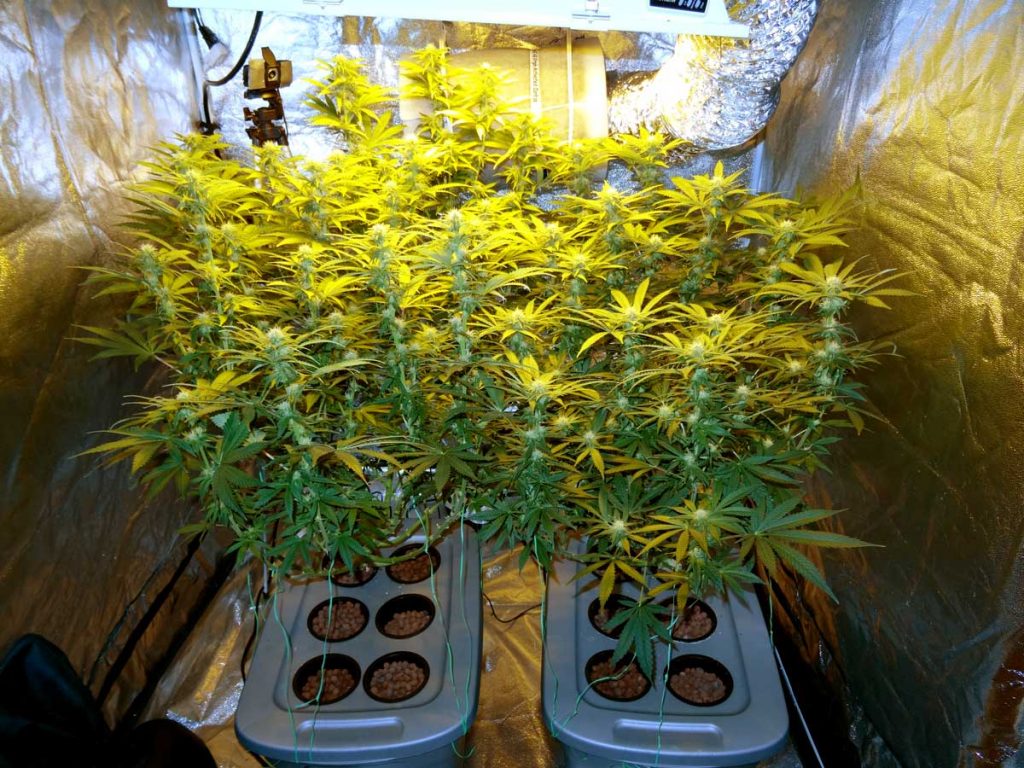
It involves removing leaves from a cannabis plant. It is highly used in indoor cannabis plants. Growers believe that by defoliating cannabis plants, they can increase the overall yield. It also helps to slow down the growth process of the plant. It gives you control over the shape of the plant as well as its growing speed. You should be very careful when defoliating as a wrong cut can damage your cannabis plant. Some growers start defoliating their plants as early as in their blooming stage since it is easier to stress younger plants.
Super Cropping /High-Stress Training
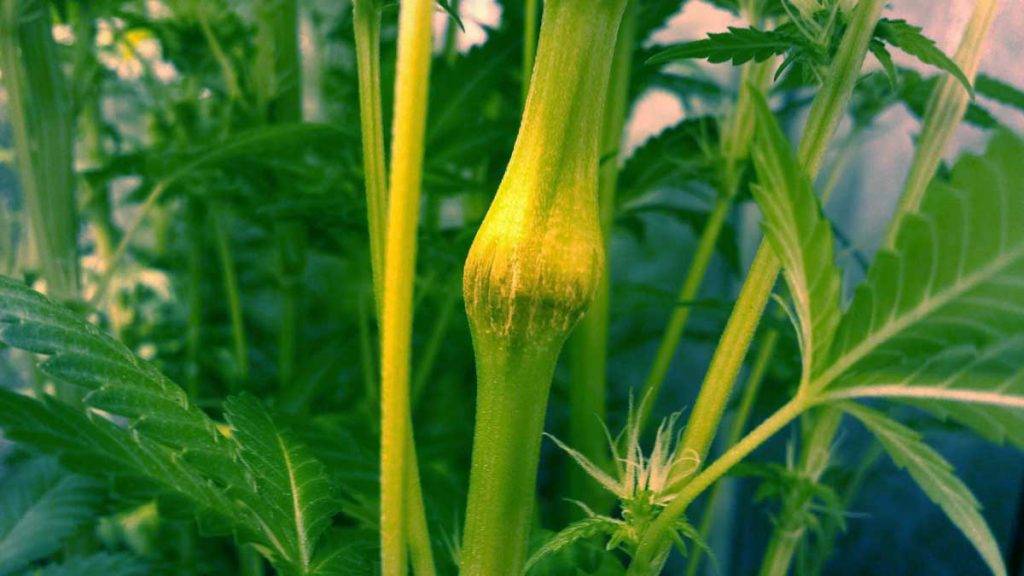
It is a technique that involves stressing a marijuana plant through slightly damaging it. The result is a bushier plant with more buds. The process consists of a buyer taking advantage of the plant’s ability to protect itself hence increase productivity. Additionally, marijuana that is stressed using supercropping has a very high chance of becoming more potent. Unlike all the other training methodologies, you need to have patience when applying super cropping. You should use it only when a plant is 3 to 4 weeks in the vegetative growth stage. You should allow your plants to develop and grow to at least 30cm high. You need to be highly skilled to perform high-stress training on your plants. You do not need to use tools as your hands can perform the skill. The technique is favorable for indoor cannabis growers.
Frequently Asked Questions
Why should Cannabis growers train their plants to grow horizontally?
Training plants to grow horizontally helps them develop thicker bud sites due to the shape and produce very high yields due to the exposure of the grow lights. By using the appropriate cannabis training techniques, you can control the final size and shape of your plant and influence the amount of yield a plant develops. Regardless of how well you train your plants, some aspects such as the potency, smell, and appearance of the weed can only be determined by the genes of the plant.
Summing Up
The vegetative growth stage should be considered to be the foundation of the development of buds. When the marijuana plants are tall, durable, and healthy, they provide buds an opportunity to increase in their potential and quality. During vegetative growth, you can control the physical factors to influence how the plants respond. Additionally, you can manipulate the pants by training them to increase the number of yields. Depending on whether you are growing your plants indoors or outdoors, their response in terms of the speed of growth is not the same. Moreover, the growing medium that you use is also responsible for how the plants grow and develop.
Read How to Grow Cannabis Series:
Best Led Grow Lights For Grow Weed
[amazon bestseller=”best led grow lights for cannabis”]
